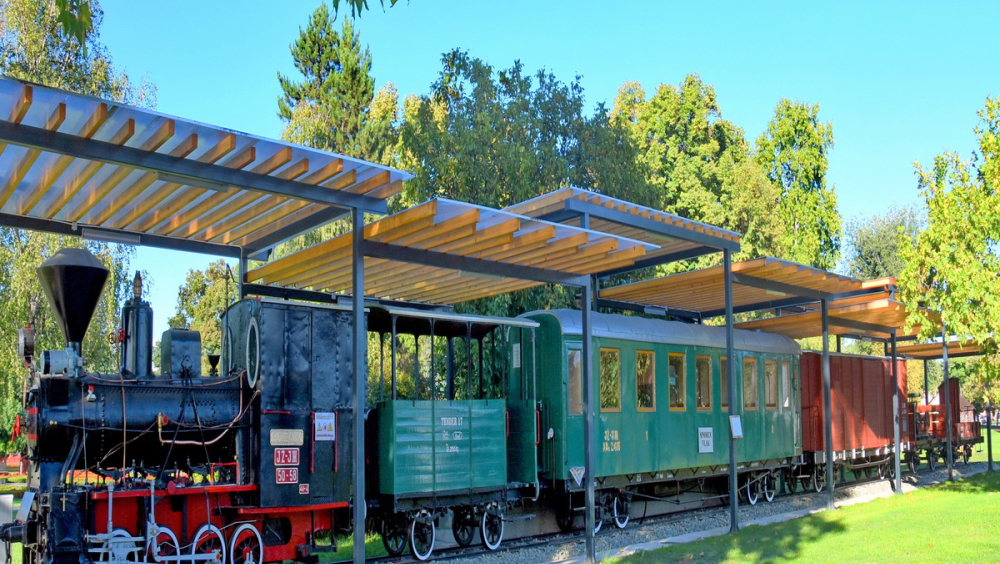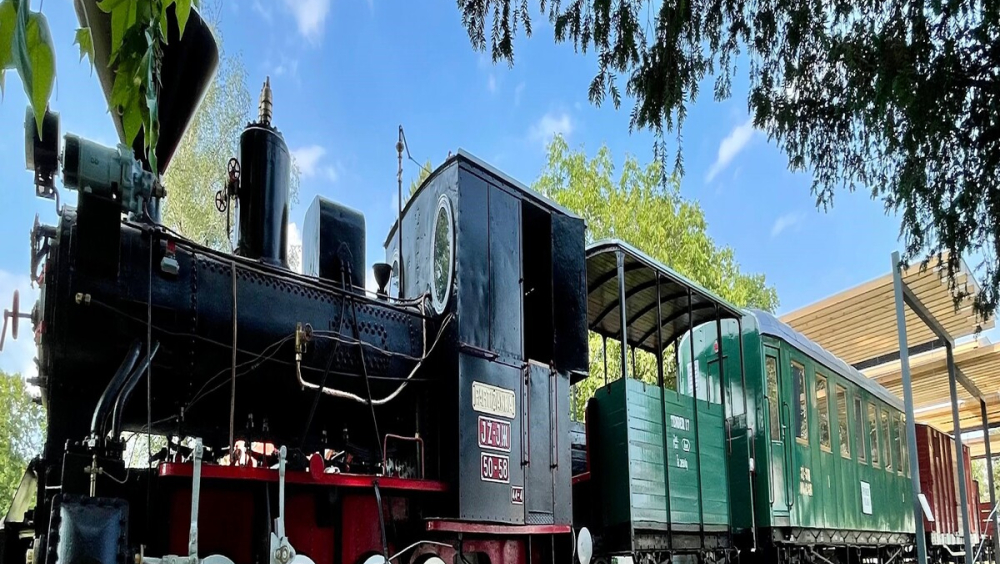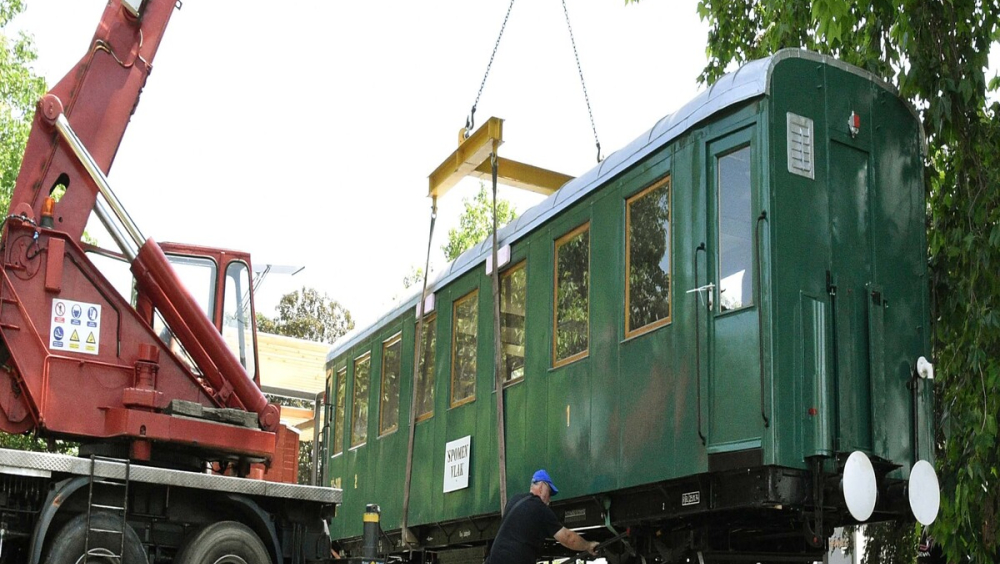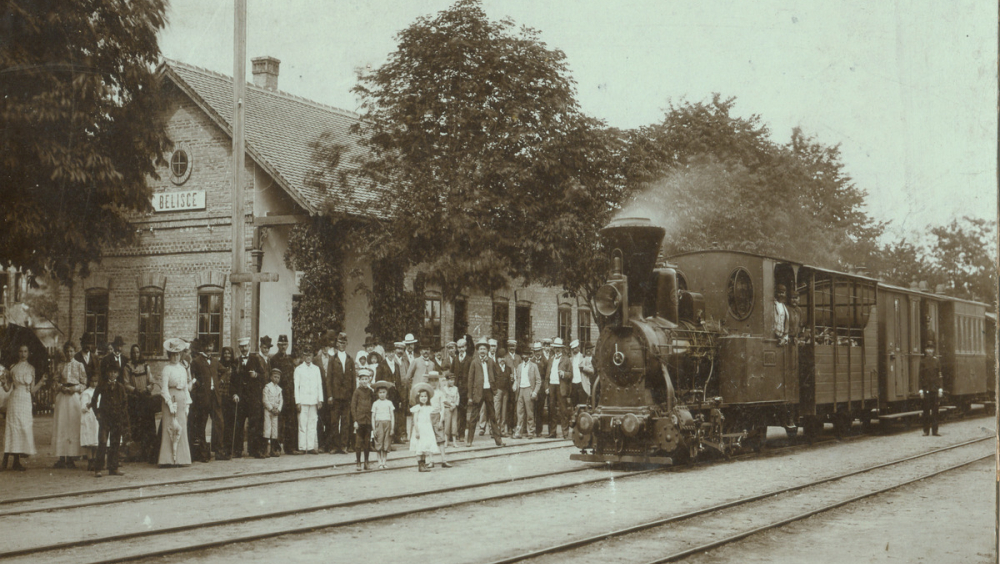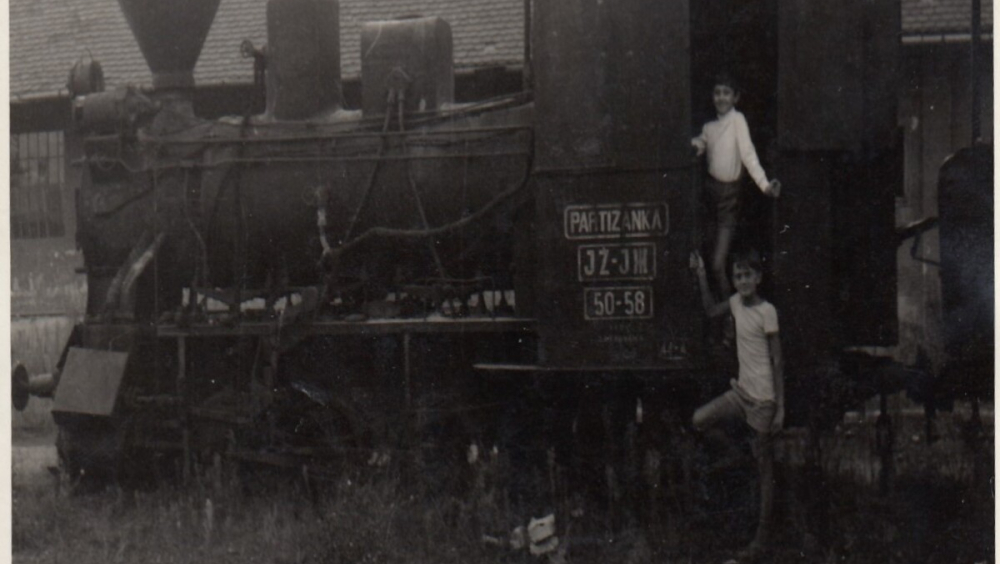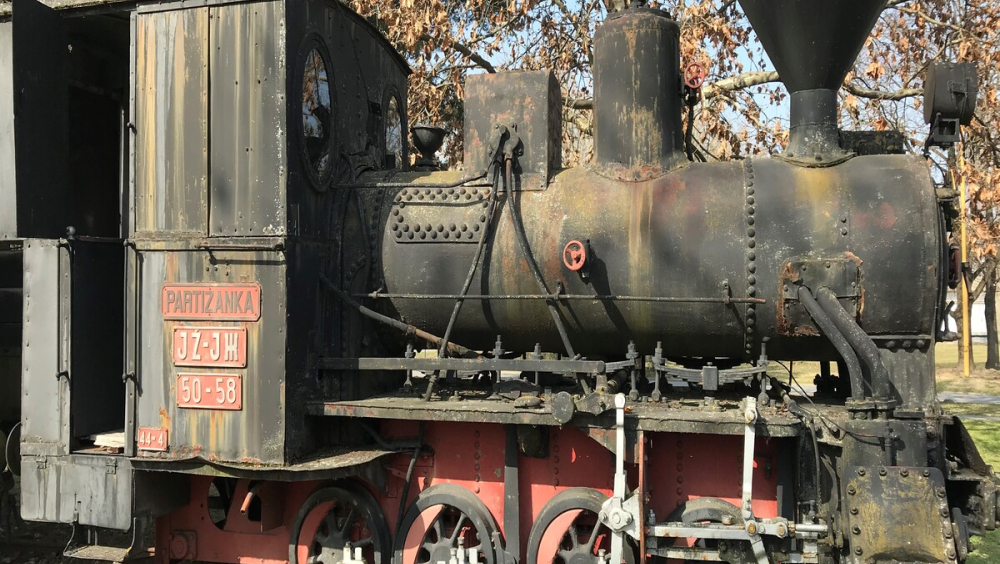Story of a lady Gutmann train
Here is a story about the train, locomotive and the last wagons of the Slavonska Podravska railway (SPŽ), Gutman's train preserved in Belišće, which forms part of the SPŽ museum collection in Belišće Museum. First of all, we want to introduce you to the Town of Belišće. Belišće is among the younger cities in Croatia, founded on the grounds of industrial development in the entrepreneurial venture of the rich merchant family Gutmann. The Gutmann family arrived in Belišće in 1884 and started industrial development by raising a modern wood and chemical industry. Construction of the 16 km long narrow-gauge SPŽ begin before the industry started growing as a purpose of forest timber to the sawmill on the right side of the Drava River. The construction of railways for public needs created a railway network, locally called Gutmann's railway, which included 184 km of vicinal railways and about 200 km of industrial tracks. The railway network that stretched across the plain of Slavonia from Osijek to the hill sides of the Papuk was completed around 1908 with the construction of the last section Belišće - Osijek. After Second World war traffic began to decrease until 1970,when it stopped permanently. Mentioned train is registered in the Register of Cultural Properties under the name Gutmann's steam train, as an extremely important railway composition in the service of local traffic from the first half of the 20th century and is one of the few preserved material remains of the former narrow-gauge SPŽ.The story of Gutmann's steam train is an icon of the railroad lifestyle of that time. Where there was a railroad, there was life. To continue the story, we give the floor to the only lady of this train, the locomotive called ‘’Partizanka’’, to tell us a story about herself and her colleges.
The story of an Old Gutmann
Dear reader,
I will tell you my story as I remember.I was produced in 1913.in the Krauss factory in Munich as a vicinal (narrow gauge) tender locomotive, series 50-58.I could only drive on tracks with a width of 1000 mm,but I had four connecting axles,which meant that I was a powerful locomotive and that I would transport a heavy load.I have two saturated steam cylinders and a large chimney with a dome to catch my sparks so they don't fly around into nature.I liked to think of this dome as if I had a big lady's hat on, no matter what sparkled underneath it.The day came when I set off on my way to Belišće.I arrived in the rolling stock of SPŽ in 1919.
The work was difficult,but since I was a strong locomotive,I could pull 360 tons and easily pulled about 50 of my companions,wagons that bent under the load of large logs.I never had to rush at high speed,so I went at a maximum of 30 km/h.Those were good times,when work was done.Beauty was less important,but every day we were ready to go to the forest to get a new load and drive the logs to the sawmill.
The best time for me was when I was pulling passenger wagons.Arriving at stations,the hustle and bustle,the buzz,the greetings,the kisses,the waving on departure and arrival,the sound of the traffic horn and the departure from the station was a wonderful experience.But then came the war.Those were sad days for all of us.That year,1942, I stayed on the Čačinci-Vočin railway line,waiting to start my journey again.And I started in 1943 when I was trained for transport in the liberated territory in order to serve the needs of partisan units for the transport of fighters,wounded and materials.That’s how I got the name "Partizanka".After the war,I was returned to my Belišće.I continued to drive passengers,goods,grains and those were beautiful and peaceful days.I became a part of the lives of people in these areas,many of which worked on the railways.The railway uniform was valued and people were satisfied.I happily drove the tired railroad workers home after work.They mostly lived in houses along the railways and their work never ended.They were always there with their families,along with the trains.I listened many life stories,many generations have passed.I drove them to Osijek if they went to buy shoes,books etc.I drove them to school,doctor,in short,I was always here for them.The railway connected people,made new acquaintances on it,enabled work and provided security.Many couples met in my carriages on long journeys.I was slow,I admit,but we all had patience.We created many memories together,sometimes good and sometimes bad.For years,we lived like this, building settlements and cities,life went on and got faster,and we old locomotives got slower.Around us,new railroads were being built that were wider,and the new locomotives that pulled the wagons were big, fast and nice.It was only a matter of time before we were replaced.
The year 1970 came and that was the last time I drove my section to Osijek. The old rolling stock of the SPŽ was scrapped and cut. While waiting to be cut or replaced like most, I was saved because of the name: PARTIZANKA, JŽ 50-58, 44-4. Due to the fact that I spent the war years working for partisan units, I was separated from the vehicle fleet intended for cutting and remained preserved to this day. Along with me, four wagons have been preserved (little younger than me). The fact that we were preserved meant well-deserved retirement. My last address, Belišće, the city where I started working as a locomotive driver of the SPŽ rolling stock.
Fortunately, we were not forgotten, but as we get older, we are more and more valuable as cultural heritage. In 2016, Gutman's steam train was entered into the Register of Cultural Properties.
We felt that the time was coming when we would again be useful to our community. And it came. Big cranes arrived, they lifted us up and loaded us into big trucks, and on the pages of the city of Belišće and all local newspapers, texts appeared: "Our old train, the symbol of the SPŽ, our ‘’Guco’’ is moving, but only to return more beautiful and in full glory". We are witnessing the beginning of the implementation of the most important activity in the VICINaD project.This project includes the complete restoration of the Memorial Train of the old SPŽ,which includes a locomotive and 5 wagons,and its placement in the area near the City Administration building.A new "station" is built for the train and the renovated wagons also received new facilities that promote the industrial heritage of Belišće and Barcs, as well as the tourist potential of the cross-border area.
We were torn apart, and all the worn wooden parts were replaced.The day has come to return to Belišće. Happiness was enormous when we saw the satisfaction of the people who welcomed us. We were carefully lowered onto a section of the track, our old track, under a roof prepared for us.The visits followed one after the other.Everyone wanted to sit in a carriage, walk through the train and reminisce about the old days. We are also equipped with new digital solutions.
This year will be 110 years since the day I was produced.I remember the days gone by and wonder if there is anyone else from my generation?I know there are few of us left,but I would like to hear and see each other. They say it's possible virtually. No one is going anywhere, we are old and have no tracks,but still the new technology allows us to meet and remember the past days together.
Maybe someone will contact me when they read my story.Stories reach far,maybe to my factory where I was produced,to some distant relatives who still drive tourists,or to some who still work.
Maybe I'm in a different time,but I still know that I'm worth it.
Greetings from the city of Belišće,
Your Gutmannka
Founding of the Town of Belišće began with the construction of a railway and a sawmill in 1884. From that moment on, nothing was the same in the territory of Slavonia. The Slavonska Podravska railway (SPŽ) was created as a need of a family business in Belišće for the construction of industrial railways in this region. The growing demand for the transport of passengers and goods enables the SHG company to build vicinal railways. The construction site of the railway and the company were visited in 1889 by the Croatian Ban Count Karoly Khuen-Hedervary. Although it was a narrow-gauge railway, various transshipment stations enabled the shipment of goods and passengers onto normal-gauge railways and connections with all other railways in the country and further to European countries. In 1904, Emperor Franz Joseph I awarded the title of baron de Gelse et Belišće to the Gutmann brothers, precisely because of their credit in developing of the industry.
Heritage of SPŽ, cultural and natural values, the interweaving of cultures, is the cultural heritage of the region that started positive trend towards cross-border cooperation in all areas.
The VICINaD project (Virtual re-connection of industrial nodes along the Drava between Hungary and Croatia) is a Hungary-Croatia cross-border cooperation project and is one of the European Territorial Cooperation programs. Its purpose is to improve the competitiveness of tourism along the Drava River by strengthening the historical thematic connection of industrial cities, highlighting the common identity, presenting the industrial heritage as a valuable asset and putting it to work with the aim of further developing tourism and cooperation.
The restoration of the cultural property "Gutmann's steam train" is the promotion of industrial heritage in the cross-border area, with an emphasis on the town of Barcs and Belišće and the potential tourists of the Drava River.
